The spider Brown hermit belongs to a group of spiders commonly known as “violin spider” due to the violin-shaped marking on the dorsal surface of the cephalothorax (head and thorax fused) with the violin neck facing the abdomen.
Characteristics of the violin spider
The shape and intensity of the violin spider pattern may vary. A more definitive diagnostic feature is the arrangement of the eyes on the front of the cephalothorax: six eyes arranged in three pairs in a semicircle with a space between each pair. Most spiders have eight eyes.
The violin spider is light brown to brown, with uniformly colored spineless legs. Female bodies range in size from 10 to 15 millimeters and have a leg span of more than 25 millimeters. Males are generally half the size of females. They shed a skin that extends over a flat surface.
The violin spider has been spotted throughout Alabama, but is most commonly found in the northern half of the state.
In the wild, this spider lives outdoors in arid areas such as caves and piles of rocks and logs. Around homes, you are most likely to encounter them under woodpiles, overhangs, tree bark, voids in walls, leaf litter, bushes, and crawl spaces
They are attracted to houses because there are hiding places and prey to eat. They enter homes through cracks or cracks in the foundation or around doors, vents, or under eaves or soffits. People can even carry these spiders into residential buildings in boxes, furniture and other objects.
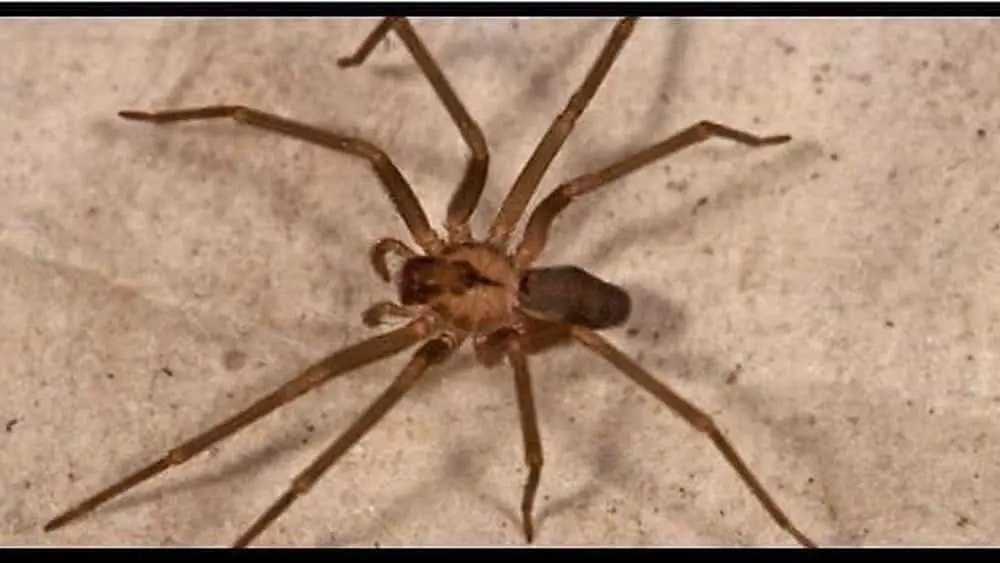
They have adapted well to life at home. In homes, they are found in areas without air conditioning or ventilation, such as near a furnace or water heater, in the bathroom behind a toilet or tub, and in the basement or under stairs. They are also found in messy storage areas and closets, under furniture and folded sheets, and in any other messy areas where the climate is dry and warm.
They are also commonly found in storage boxes, shoes, coats, stored clothes and drawers. They are active in temperatures between 45 degrees F and 110 degrees F. However, they can become inactive in the winter as they respond to lower light cycles even in a heated home.
Some violin spiders are often mistaken for brown spiders. Eye patterns can differentiate them. Sack spiders and funnel-weaving (hobo) spiders have eight eyes arranged in two rows of four, while cellar spider species have eight tightly packed eyes or six eyes clustered in two groups.
The violin spider gets its name from its shy nature. During the day they rest in hidden places, in dark and secluded areas. At night they wander in search of prey. Occasionally, they can be seen wandering away from their shelter and crawling on floors, walls and other exposed surfaces during daylight hours. This behavior is usually triggered by starvation, pesticide application, overcrowding, or disturbance.
The violin spider eats live and dead insects. It has remarkable survival skills, it can survive up to 12 months without food or water and can live up to 2 years.
Unlike most web weavers, the violin spider does not build webs to catch prey. Instead, it builds irregular flat webs called “retreats” made of messy silk threads.
Females use silk withdrawals to form egg sacs. Females rarely venture far from their roosts, while males and older juveniles are more mobile and tend to travel further.
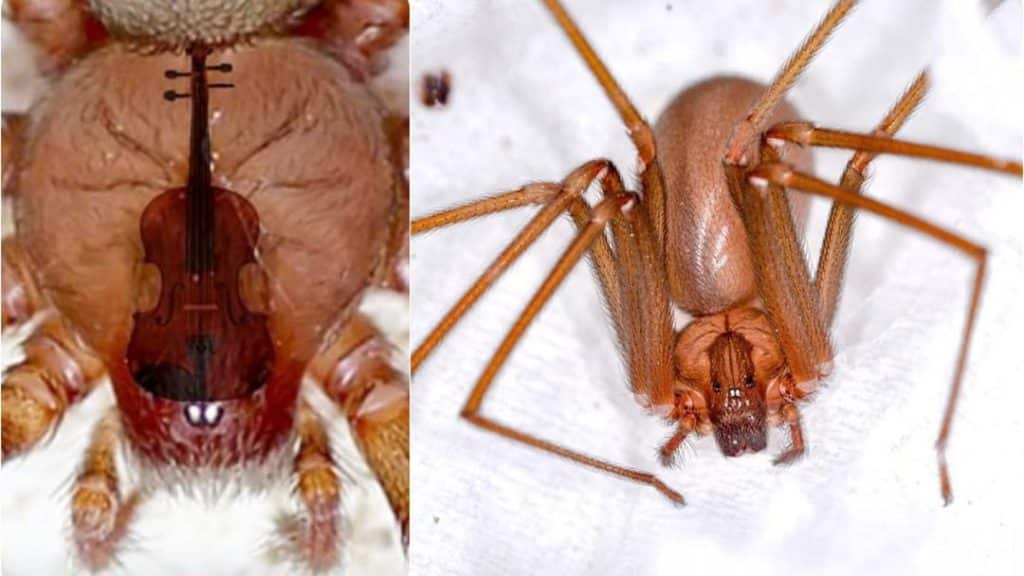
When threatened, they usually flee, apparently to avoid conflict. They do not jump and the young do not swell; that is, they do not use silk threads to disperse in the wind as other young spiders do. Despite their solitary habits and non-aggressive nature, they occasionally bite people.
The violin spider has small fangs and cannot bite through clothing. Humans are usually bitten when they inadvertently roll over a violin spider while sleeping, put on clothing or shoes, or move stored objects containing spiders.
The violin spider is solitary, but in case of heavy infestations it is possible to find a large number of them in a small area.
Brown recluse spiders are long-lived. They mature in about a year and have an average lifespan of between 2 and 4 years.
The female lays forty to fifty tiny yellow eggs inside a sticky silk sac less than an inch in diameter. A female can produce several sacs and up to 300 eggs during the summer. The female spider will protect the egg sac until the spiders emerge.
The eggs hatch in about a month. Spiders molt five to eight times between 10 and 12 months to develop into adults. This spider is hardy and can tolerate up to 6 months of extreme drought or no food.
The bite of the violin spider
Spider bites, in general, are a rare phenomenon. A spider typically bites in self-defense, and the brown recluse is no exception.
Violin spider bites are difficult to diagnose, even by doctors. Often the initial bite is not painful, but the venom is a potent cytotoxin that can cause an enlarged necrotic wound that has difficulty healing.
Most violin spider bites remain localized and heal within 3 weeks without serious complications or medical intervention. In some cases, the bite produces a necrotic lesion, which typically results in a flat or slightly sunken bluish patch with irregular edges, a pale center, and peripheral redness, often with a central blister. The ulcerated, sunken wound may expand and take months to heal.
In rare cases, bites in the early stages induce systemic reactions accompanied by fever, dizziness, chest pain, nausea or vomiting, particularly in children and the elderly. Death is extremely rare.
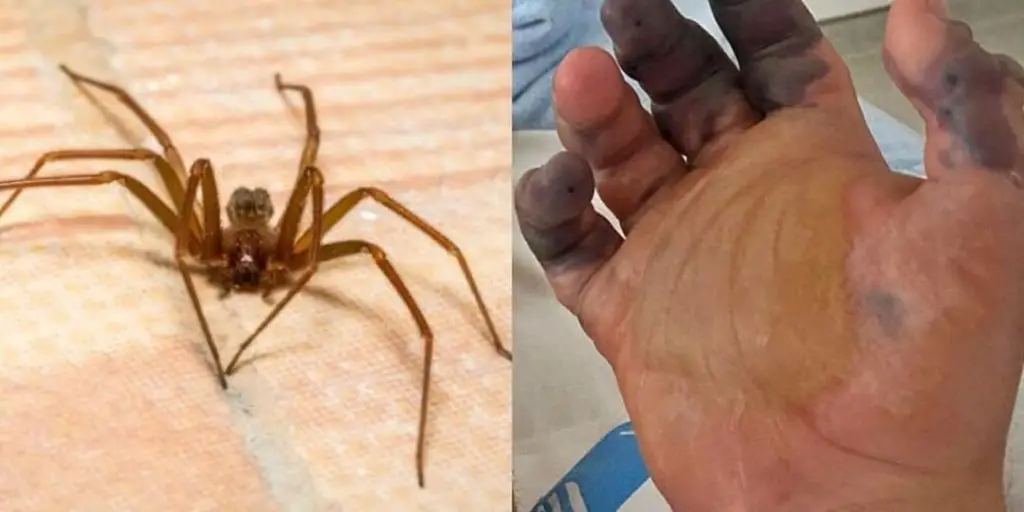
First aid for someone who has been bitten by a violin spider includes using an ice pack to prevent or reduce swelling in the area where the bite occurred. Cooling the area helps reduce tissue damage and reduce burning sensations, pain and swelling. Clean the wound with mild soap and water and apply antibiotic ointment to prevent infection.
Victims should immediately seek medical attention from licensed physicians. If the violin spider is found and identified as the likely culprit, it should be taken with the patient to the doctor.
Crushed or damaged specimens can usually be identified as well. Confirmation by an expert will help the doctor decide on the appropriate course of treatment.
Once established in a home, brown hermit spiders are often difficult to control. They can take refuge in dry, dark, undisturbed areas, and many of these places exist inside homes and buildings. Because of their secretive habits and potential health threats, treatment is best performed by a professional pest control service.
Successful violin spider control requires an integrated pest management (IPM) plan that uses multiple control methods and involves cooperation between residents or homeowners and pest management professionals (PMPs).
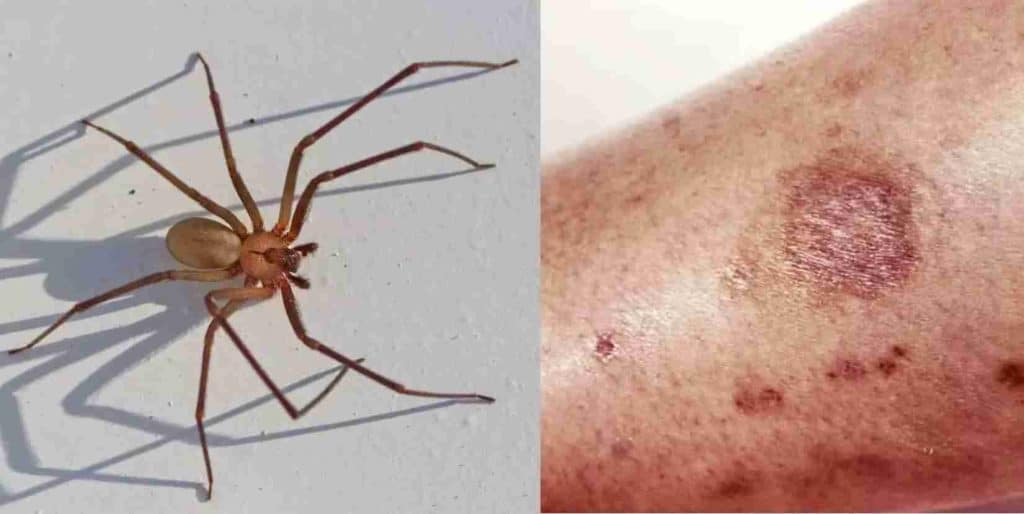
Residents should take steps to avoid bringing home pests and keep homes clean and clutter-free. Call the professionals when pests occur and prepare the home so PMPs can access potential spider hiding places for inspection and treatment.
Until the violin spider is fully controlled in a home, residents should carefully check and shake bedding before going to sleep. Remove bed skirts to reduce the chance of spiders crawling on the bed.
Brown hermit spiders usually hide during the day and come out at night. These spiders often bite if they become trapped in the skin.
The PMP’s role includes carrying out a thorough inspection, deciding on control technology and products, and processing practice.
Pesticides labeled for spider control are often necessary for serious violin spider infestations. Engaging the services of a professional pest control operator is an option to seriously consider when applying chemicals.
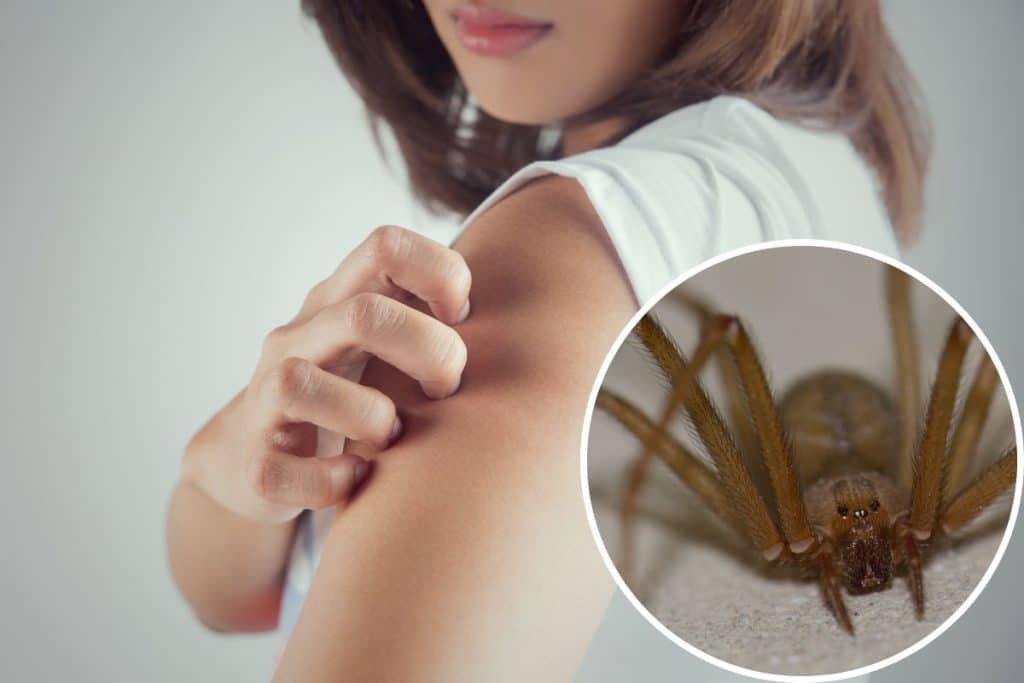
Targeted applications on external and internal cracks and voids where spiders are known or suspected to feed or hide. Encapsulated formulations of residual pesticides and waterproof dust are a good choice for spot treatment of spaces such as voids in walls, cracks, crevices, behind shutters, baseboards, outlet covers and underlayments.
Aerosol products can be sprayed directly onto spiders. All chemicals kill rays by direct contact.
Applications should follow label directions to minimize risks and maximize benefits. More importantly, pesticides are essential along with non-chemical measures such as vacuuming, sanitation and shelter removal.
#Violin #spider #bite #extremely #dangerous